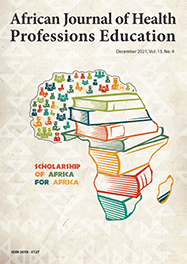Research

The contribution of nursing preceptors to the future nursing workforce
Abstract
Background. Apart from a global need for more nurse practitioners, there is also a need for nurse practitioners who are competent and confident to address the needs of their communities. Furthermore, the future nursing and midwifery workforce needs to have effective interprofessional collaboration skills and a person-centred approach. A clinical model, accepted by the National Department of Health in 2011, places preceptors at the centre of clinical education to assist in the improvement thereof and to develop much-needed attributes in nursing students. No research has been conducted to explore the way in which preceptors see their contribution to developing the future nursing workforce.
Objective. To explore preceptors’ views of their contribution to the development of the future nursing workforce.
Method. A qualitative, visual, narrative inquiry design was used. Following a 3-day preceptor-training workshop, 38 preceptors from two nursing education institutions collectively participated in creating images of their views on their contribution to developing the future nursing workforce. The first 6 steps in the visual analysis were used to analyse the images.
Results. Six categories originated from the images, i.e. skill set, stakeholders, diverse students, transformative learning, relationships and practice.
Conclusion. Preceptors are more than handmaidens of the educational system. They may contribute significantly to the development of the nurse and midwife workforce, as they promote competence, people-centredness and interprofessional collaboration, which are strategies proposed by the World Health Organization for reaching universal health coverage.
Authors' affiliations
L Hugo, School of Nursing, Faculty of Health Sciences, University of the Free State, Bloemfontein, South Africa
Y Botma, School of Nursing, Faculty of Health Sciences, University of the Free State, Bloemfontein, South Africa
Full Text
Cite this article
Article History
Date published: 2020-10-16
Article Views
Full text views: 2219




.jpg)
Comments on this article
*Read our policy for posting comments here